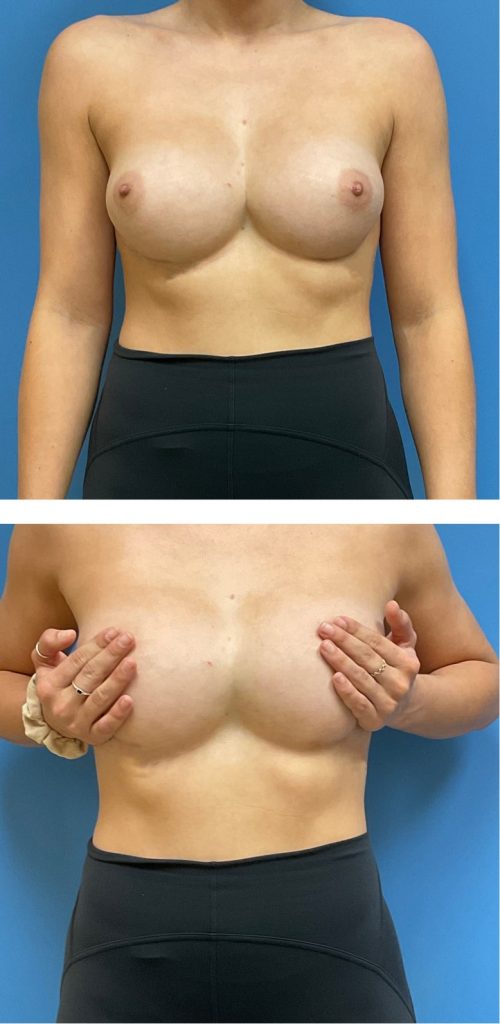
Clear Lake
Houston Plastic and Reconstructive Surgery
575 East Medical Center Boulevard
Webster, TX 77598
Phone: (281) 282-9555
Monday–Friday: 8 a.m.–5 p.m.
Med Center/Museum District
Houston Plastic and Reconstructive Surgery
1801 Binz Street #300
Houston, TX 77004
Phone: (713) 521-4777
Monday–Thursday: 8 a.m.–5 p.m.
Symmastia (Uniboob) Repair
One common motivation for breast enhancement surgery is attaining beautiful cleavage between the breasts. In rare cases, the breasts end up too close together and look like a “loaf” or “uniboob” instead. This condition, which can also be genetic, is called symmastia and often impacts the patient’s confidence. The board-certified plastic surgeons at Houston Plastic and Reconstructive Surgery have specialized as breast surgeons in symmastia repair. Women come to our practices in Houston and Webster, TX, from throughout the U.S. and other countries for our surgeons’ extensive experience in revision breast surgery.
Symmastia Repair
Before & After Photos
WARNING:
This feature contains nudity. Please click OK to confirm you are at least 18 years of age and are not offended by such material.
Candidates for Symmastia Repair
While symmastia is rare, it can occur naturally during puberty (congenital symmastia) or after breast augmentation or other breast surgery. Candidates for symmastia repair want to fix one or more of the following concerns:
- There is no space between the breasts because the implants have shifted to the midline of the chest.
- The skin between the breasts is elevated (like a tent) or lifts when the breasts are pushed together instead of lying flush against the sternum.
- The nipples point toward the arms instead of forward.
- The implants lie below the breast crease (bottom out).
- Fat and breast tissue have formed between the breasts.
Symmastia Repair After Breast Augmentation Before & After Photos


How Do Doctors Fix Symmastia?
Our surgeons perform the surgery as an outpatient procedure while the patient is under general anesthesia. The specifics of the surgery vary with patient needs and may include revising the breast pocket, reattaching the chest muscle, and using smaller implants. Whenever possible, our surgeons use the same placement for incisions as the original procedure.
Recovery After Symmastia Repair
Patients return home the day of surgery in the care of an adult friend or family member. Recovery varies between patients and with the specifics of the surgery. Patients are instructed to wear a Thongbra® and limit arm motion for 6 weeks.
Back to Top






